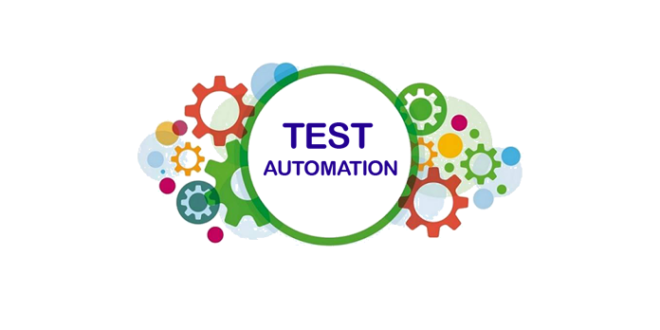From Guidebook to Automated Screening: A Comprehensive Overview to Transitioning Smoothly and Efficiently
In the realm of software application screening, the shift from manual to automated procedures has actually become a progressively important shift for companies looking for to improve performance and accuracy in their testing methods. As modern technology remains to advance, the demand for seamless and effective automatic testing methods has actually never been more pressing. The journey from handbook to automated testing is not without its challenges, however when come close to strategically and with a clear strategy in mind, the advantages can be substantial - automation testing. In this comprehensive guide, we will explore essential steps and considerations vital for a successful transition, from the preliminary option of devices to the assimilation of automation right into existing process. Keep tuned to discover the understandings that will aid lead the way for a smoother and more reliable screening process.
Benefits of Automated Evaluating
Automated screening provides various benefits, enhancing effectiveness and precision in software application growth processes. One main benefit is the substantial reduction in screening time. Automated tests can be run concurrently on several tools and operating systems, significantly accelerating the screening phase compared to hand-operated screening. This raised performance permits faster feedback on the top quality of the software program, making it possible for designers to determine and address concerns immediately.
Moreover, automated testing ensures a higher degree of precision in discovering issues. Consistency in testing is likewise improved, as automated tests carry out the very same actions specifically each time they are run.
Selecting the Right Devices

To start with, analyze your purposes and needs. Recognize the range of your job, the technologies entailed, and the skill collection of your team. This evaluation will help you identify the features and capacities you require in your screening tools.
Secondly, consider the compatibility of the devices with your existing procedures and systems. Smooth assimilation with your existing software application growth lifecycle is vital to guarantee a smooth transition to automation.
Furthermore, examine the scalability and adaptability of the tools. As your testing needs advance, the devices ought to be able to adapt and fit modifications properly.
Lastly, element in the support and neighborhood around the tools. Durable assistance and an active user neighborhood can give beneficial sources and support when applying automated screening. By meticulously taking into consideration these elements, you can choose the right devices that line up with your requirements and established the stage for a successful transition to automated screening.
Writing Efficient Examination Manuscripts

When crafting examination scripts, it is important to think about the specific requirements of the software program being checked and guarantee that the manuscripts address all crucial performances. Descriptive and clear naming conventions for test manuscripts and examination situations can boost readability and maintainability. Additionally, including error handling systems within the examination manuscripts can aid in recognizing and resolving concerns promptly.
Furthermore, arranging examination manuscripts into modular parts can improve reusability and scalability, reducing redundancy and boosting performance in test script upkeep. Routine evaluations and updates to check scripts click this are vital to equal progressing software program demands and performances. By adhering to these concepts, testers can create robust and efficient examination scripts that contribute considerably to the success of automated testing processes.
Integrating Automation Into Workflows
Reliable assimilation of automation tools right into existing process enhances processes and improves performance within software growth cycles. When integrating automation into workflows, it is crucial to identify recurring tasks that can be automated to conserve time and lower human mistake. By perfectly incorporating automated testing tools like Selenium or Appium right into the software growth lifecycle, groups can attain faster responses on code modifications, resulting in quicker bug detection and resolution. This integration permits continual testing throughout the advancement process, making sure that any kind of problems are identified at an early stage, leading to higher software program high quality. Furthermore, automation can be used to activate examinations automatically after each code devote, supplying immediate recognition and maximizing testers to concentrate on even more complicated scenarios. Correct combination of automation tools needs collaboration in between advancement, screening, and operations groups to establish a unified operations that optimizes effectiveness and effectiveness in delivering top quality software.
Making Sure a Smooth Shift
Efficiently transitioning to automated screening includes careful planning and mindful execution to reduce disruptions and take full advantage of performance in the software application development procedure - automation testing. To make certain a smooth shift, it is vital to start by performing a complete assessment of the present testing processes and determining locations where automation can bring the most considerable advantages. Engaging with all stakeholders early in the process, consisting of designers, testers, and task managers, is vital for garnering assistance and buy-in for the automation initiative
Interaction is essential during this shift stage. Clear communication of the goals, advantages, and assumptions of automated testing assists to take care of any resistance or issues that might emerge. In addition, providing ample training and sources for employee to upskill in automation devices and techniques is essential for ensuring an effective transition.

Conclusion
To conclude, transitioning from handbook to automated screening supplies many benefits, including increased efficiency and integrity. By picking the ideal devices, creating efficient test manuscripts, and incorporating automation perfectly into operations, companies can make sure a effective and smooth transition. It is important to embrace automation as a beneficial possession in software screening procedures to enhance total top quality and performance.
In the world of software testing, why not check here the shift from handbook to automated processes has actually ended up being a progressively crucial transition for companies looking for to improve performance and accuracy in their testing methods. Automated tests can be run at the same time on multiple devices and running systems, drastically speeding up the screening stage compared to hands-on testing. Uniformity in screening is likewise boosted, as automated examinations implement the exact same find more steps exactly each time they are run.To make certain the effective application of selected testing devices, the creation of effective test scripts plays a vital function in validating the capability and performance of automated processes - automation testing. By complying with these concepts, testers can create robust and efficient test scripts that contribute dramatically to the success of automated screening procedures
Comments on “Understanding Automation Testing: Tools, Methods, and Advantages”